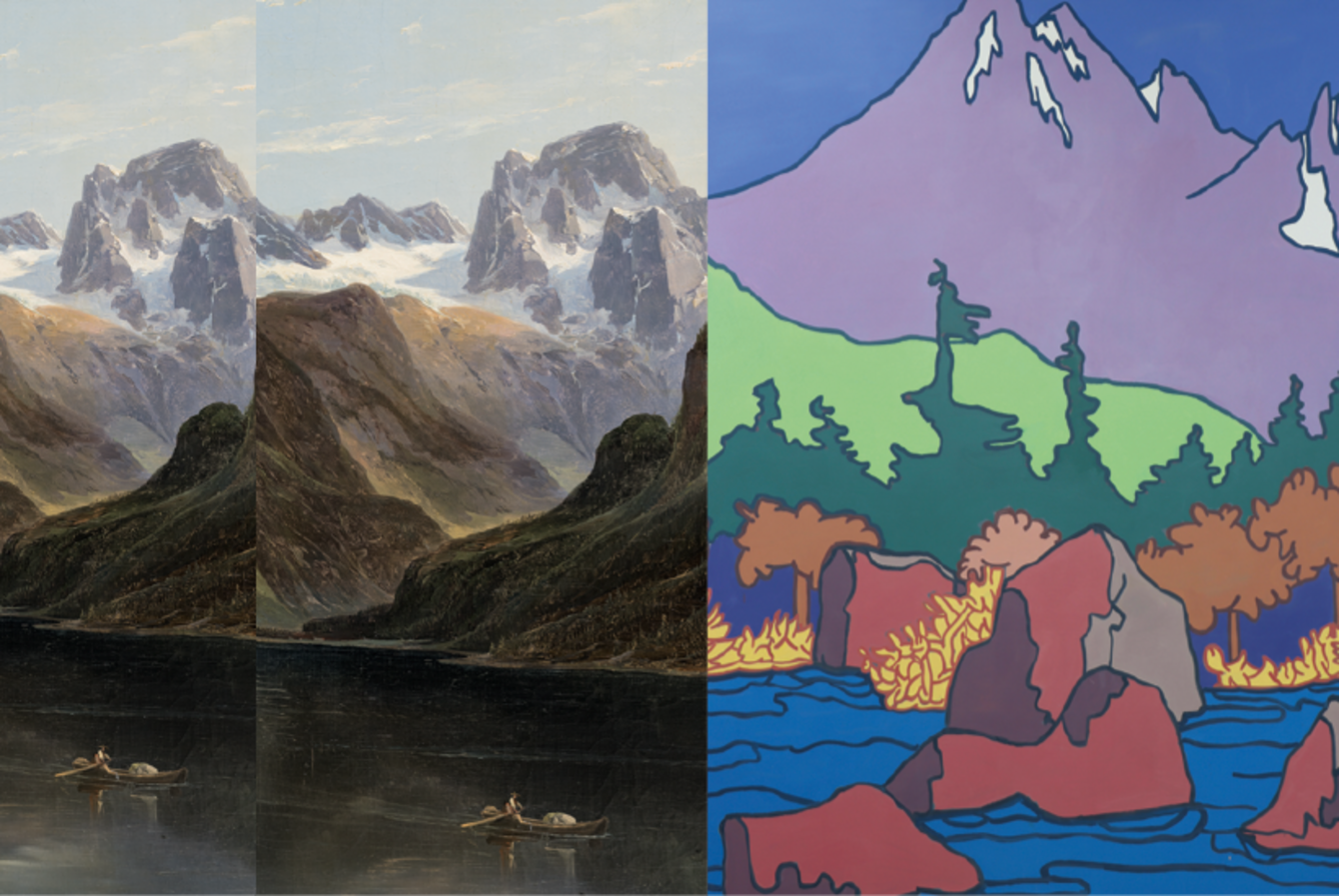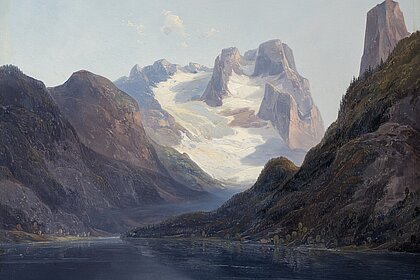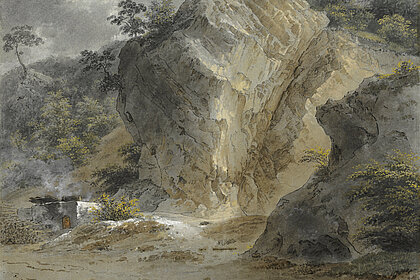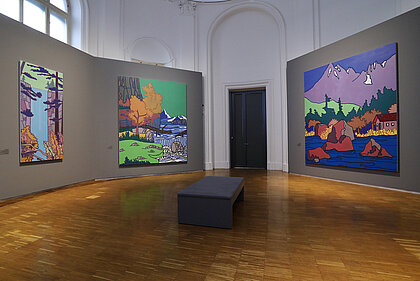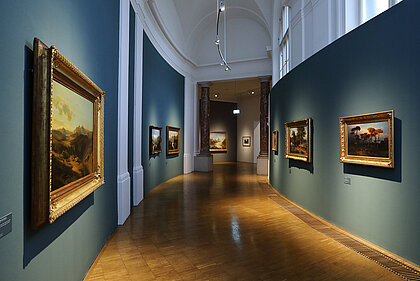The Alps are very much in the media and public consciousness at present, mainly on account of two major themes: for our leisure-oriented society, they represent a place of yearning for sports activities, recuperation and enjoyment of nature. And in the discussion around the threatened world climate, they serve as a sensitive indicator of the effects of rising global warming.
Around 200 years ago the Austrian Alps were seen as an area to be discovered. Travel writers wrote the first guides with descriptions of the Alpine regions, the first tourists arrived to delight in the beauties of the landscape. Soon they were followed by illustrators of vedute and painters, who introduced their pictures of the mountain landscapes to the urban public. Certain views proved particularly suitable for conveying visually how an area was imagined. Some of them were so successful that we can trace a line from the paintings of the Biedermeier period to modern-day mobile phone photos taken by tourists. This is referred to as the standardisation of the gaze.
Franz Steinfeld (Vienna 1787-1868 Pisek) was one of the artists who was key in this ‘visualisation process’ of the Austrian Alps. The area that he visited over the years and liked best to depict was the Salzkammergut. From around 1820, this region was the summer meeting-point for a variety of artists; here, above all, was the place where the classic landscape of Austrian Biedermeier painting came into being. One painting of Steinfeld’s from 1824 is still considered the ‘birth picture’ for this. However, Steinfeld has entered art history as the pioneer of 19th century atmospheric landscape. As a long-time professor of landscape painting at the Academy of Fine Arts in Vienna, he moulded many students, in this way leaving his mark on the future, too.
In his day Steinfeld was successful and recognised, and in the critiques and art literature he is often mentioned in connection with Ferdinand Georg Waldmüller or Friedrich Gauermann. These days, however, he is familiar only to those in the know. For this reason, the exhibition, starting with his paintings in the Neue Galerie Graz collection, has set itself the goal of presenting for the first time a survey of Franz Steinfeld’s life work. The prerequisites are shown with a painting of the Baroque Dutch landscape painter Jacob von Ruisdael, as well as with Steinfeld’s son Wilhelm (Vienna 1816-1854 Ischl), who is rescued from oblivion with several works. Numerous loans from important Austrian museum collections, private ownership and the art trade have made this possible. The path taken by landscape painting in the second half of the 19th century is illustrated by works of some of Franz Steinfeld’s pupils from the Neue Galerie Graz collection.
A current painting series by Hubert Schmalix (born 1952) leads us back to the present: he reflects landscape depiction through a range of artistic media. Living in California, the artist shows us an exotic view of the Alpine, too, thereby offering altered, new perspectives on traditional, historical landscape painting.
The catalogue to the exhibition will be published in Leykam Verlag in June 2023, with contributions from the curators, as well as from Sabine Grabner, Wolfgang Kos, Götz Pochat and a literary text by Bodo Hell.




















